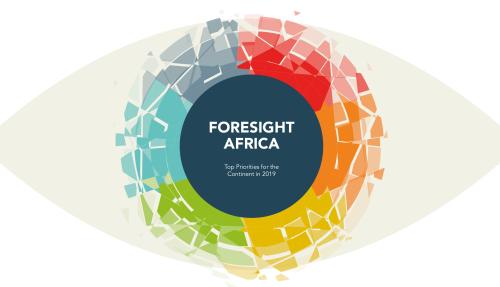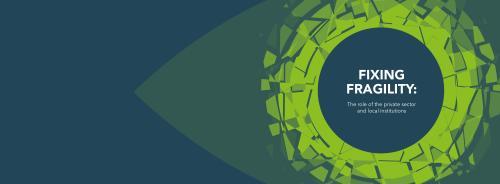Below is a viewpoint from Chapter 4 of the Foresight Africa 2019 report, which explores six overarching themes on the triumphs of the past years as well as strategies to tackle the remaining obstacles for Africa. Read the full chapter on fixing fragility.
Of the many challenges facing sub-Saharan Africa, one of the most critical is the number of areas suffering from fragility, conflict, and violence (FCV). These conditions are not new; they have posed a formidable challenge to efforts to end poverty for several decades.
Today, however, we need a new approach—and a fierce sense of urgency—to tackle FCV. The share of global poor living in fragile and conflict-affected countries has risen from 14 percent in 2008 to 23 percent in 2015. As violent conflicts continue to surge, that number will likely increase. We need a stronger focus on the underlying drivers of fragility to have any hope of achieving our goals: to end extreme poverty by 2030, and to boost shared prosperity around the world.
That is why we are changing the way we do business in African countries affected by fragility, conflict, and violence. We are scaling up our support. Over the past two years, we have invested $4 billion to support private sector solutions, and we are developing a tailored approach to maximize our impact and build hope and opportunity for those living in some of Africa’s most fragile areas.
A four-pronged approach
Pivoting to prevention
The key to addressing fragility, conflict, and violence in Africa is prevention: addressing risks and grievances before they turn into full-blown crises. Through the International Development Association’s 18 Risk Mitigation Regime, we are providing more resources for countries such as Niger and Guinea to mitigate the drivers of FCV.
The World Bank Group is also working with the United Nations, the International Committee of the Red Cross, and global technology firms to develop the Famine Action Mechanism, a new initiative that harnesses state-of-the-art technologies such as artificial intelligence and machine learning to strengthen our ability to forecast famine risks and ensure that financial resources are released before famines begin.
Remaining engaged
When conflicts do occur, however, the support that countries receive can make the difference between lives lost and lives saved. That requires close cooperation between humanitarian, development, and security institutions.
One example of that cooperation is the Sahel Alliance. Members of the alliance, including the European Union and several European countries, the UN, and the World Bank Group are supporting Mauritania, Mali, Niger, Burkina Faso, and Chad with a package of over 500 projects totaling more than $8 billion through 2022. Twelve flagship programs adopt a spatial, multi-sectoral approach, which is targeted to help vulnerable populations in fragile regions.
Escaping fragility
Several countries in sub-Saharan Africa suffer from protracted conflicts that have resulted in a fragility trap. Helping them escape will require a new approach.
For example, in countries such as the Central African Republic and Somalia, we are focusing our efforts on building the capacity and legitimacy of the governments, strengthening accountability and inclusive institutions, and ultimately building the necessary trust between citizens and the state for long-term peace and stability to take hold.
Mitigating the impact of FCV
Finally, in countries impacted by forced displacement crises, we are supporting both refugees and communities that provide a global public good by hosting migrants. We are providing $2 billion to help low-income countries that are hosting large numbers of refugees—such as Cameroon, Chad, Ethiopia, Niger, Republic of Congo, and Uganda—through programs that create jobs and opportunities, build the resilience of local institutions, promote pro-refugee policies, and foster social cohesion.
We are also exploring ways to leverage the private sector to provide solutions to the forced displacement crisis. One example is the “Kakuma as a Marketplace” report that the International Finance Corporation conducted in Kenya along with the UN’s High Commissioner for Refugees to assess the economic potential of the camp. This study provides a foundation for a business competition to attract and support firms that will engage in Kakuma to support the provision of goods and services at the camp.
Ultimately, to address drivers of fragility, conflict, and violence we have to do things differently. We must systematically address the core drivers of fragility; work across the full spectrum of FCV; and forge partnerships with security, development, humanitarian, and private sector organizations. That is the only way we can prevent violence and suffering throughout Africa and give the continent’s countries—and their people—a chance to achieve their highest aspirations.
The Brookings Institution is committed to quality, independence, and impact.
We are supported by a diverse array of funders. In line with our values and policies, each Brookings publication represents the sole views of its author(s).







Commentary
The World Bank’s strategy for addressing fragility in sub-Saharan Africa
January 28, 2019